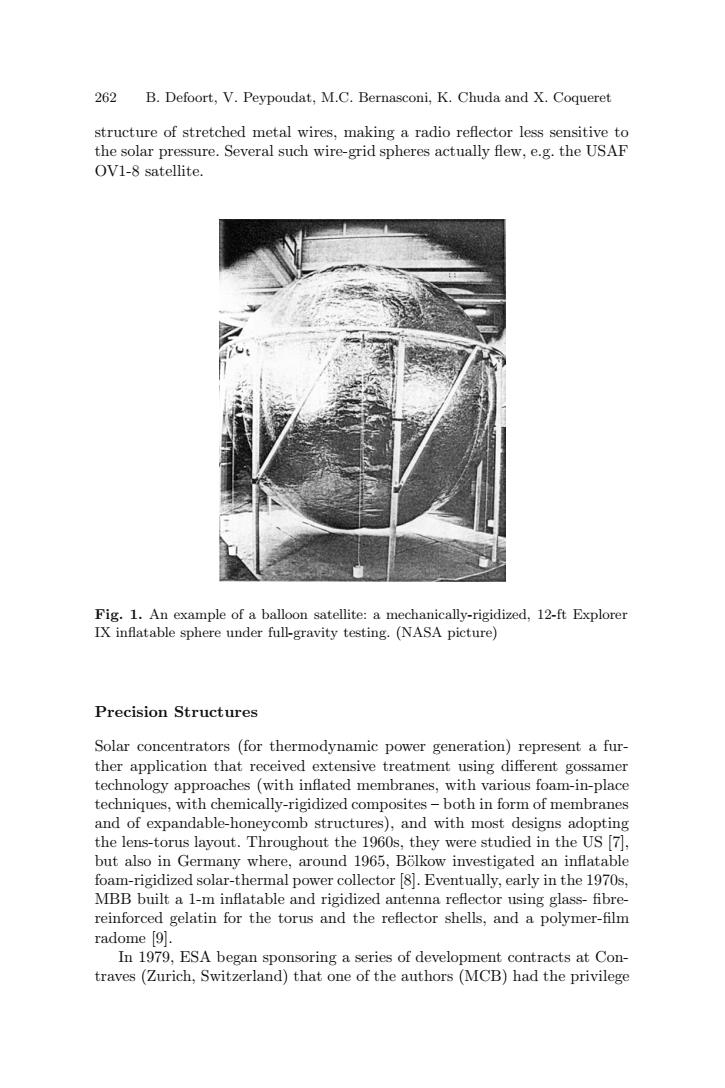正在加载图片...

262 B.Defoort,V.Peypoudat,M.C.Bernasconi,K.Chuda and X.Coqueret structure of stretched metal wires,making a radio reflector less sensitive to the solar pressure.Several such wire-grid spheres actually flew,e.g.the USAF OV1-8 satellite. Fig.1.An example of a balloon satellite:a mechanically-rigidized,12-ft Explorer IX inflatable sphere under full-gravity testing.(NASA picture) Precision Structures Solar concentrators (for thermodynamic power generation)represent a fur- ther application that received extensive treatment using different gossamer technology approaches(with inflated membranes,with various foam-in-place techniques,with chemically-rigidized composites-both in form of membranes and of expandable-honeycomb structures),and with most designs adopting the lens-torus layout.Throughout the 1960s,they were studied in the US [7]. but also in Germany where,around 1965,Bolkow investigated an inflatable foam-rigidized solar-thermal power collector 8].Eventually,early in the 1970s, MBB built a 1-m inflatable and rigidized antenna reflector using glass-fibre- reinforced gelatin for the torus and the reflector shells,and a polymer-film radome [9]. In 1979,ESA began sponsoring a series of development contracts at Con- traves(Zurich,Switzerland)that one of the authors (MCB)had the privilege262 B. Defoort, V. Peypoudat, M.C. Bernasconi, K. Chuda and X. Coqueret structure of stretched metal wires, making a radio reflector less sensitive to the solar pressure. Several such wire-grid spheres actually flew, e.g. the USAF OV1-8 satellite. Fig. 1. An example of a balloon satellite: a mechanically-rigidized, 12-ft Explorer IX inflatable sphere under full-gravity testing. (NASA picture) Precision Structures Solar concentrators (for thermodynamic power generation) represent a further application that received extensive treatment using different gossamer technology approaches (with inflated membranes, with various foam-in-place techniques, with chemically-rigidized composites – both in form of membranes and of expandable-honeycomb structures), and with most designs adopting the lens-torus layout. Throughout the 1960s, they were studied in the US [7], but also in Germany where, around 1965, Bolkow investigated an inflatable ¨ foam-rigidized solar-thermal power collector [8]. Eventually, early in the 1970s, MBB built a 1-m inflatable and rigidized antenna reflector using glass- fibrereinforced gelatin for the torus and the reflector shells, and a polymer-film radome [9]. In 1979, ESA began sponsoring a series of development contracts at Contraves (Zurich, Switzerland) that one of the authors (MCB) had the privilege